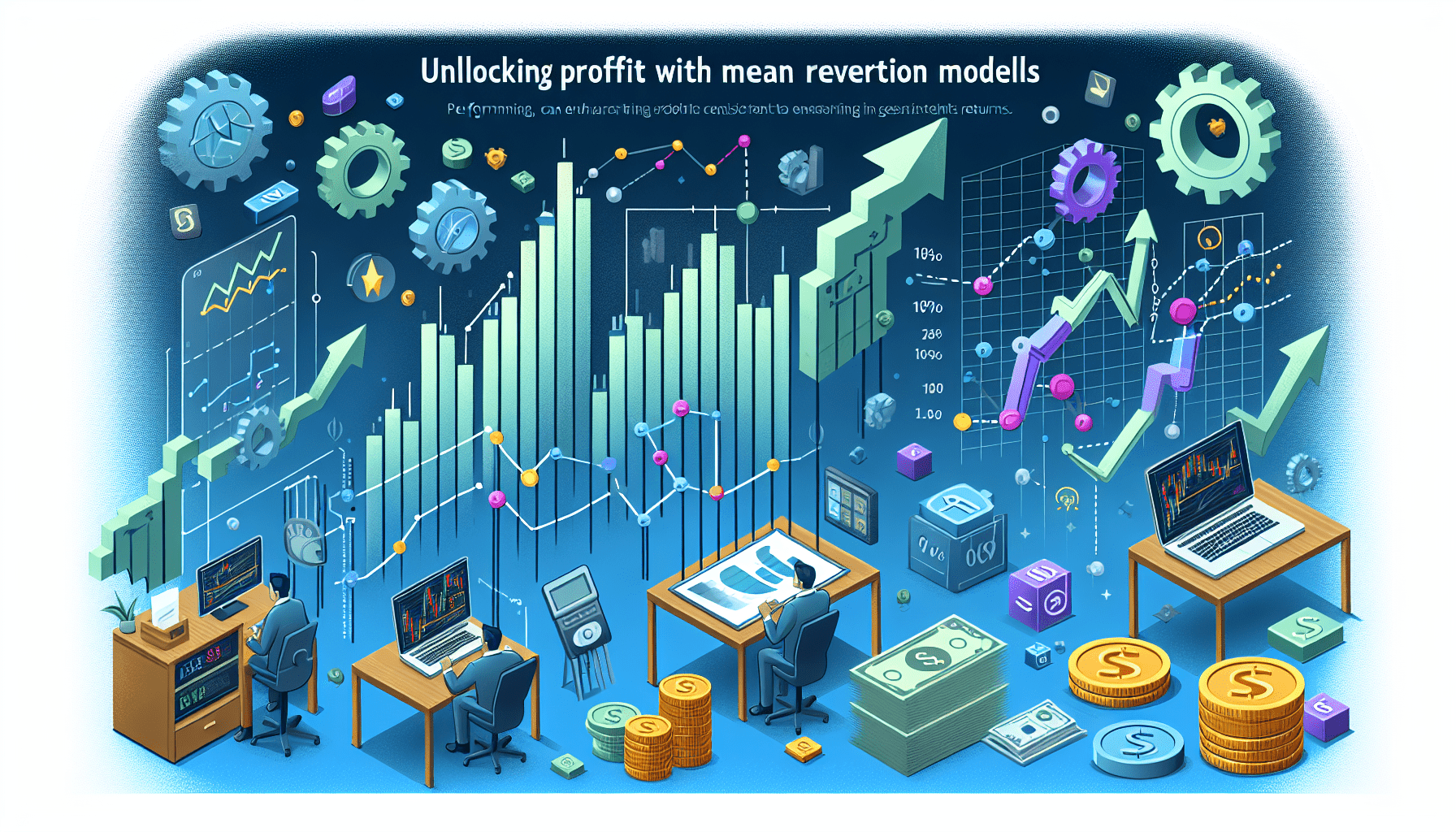Proven Automated Backtesting Tools for Prop Trading Success
In an era where precision and speed drive profitable trading strategies, prop trading professionals are turning to automated backtesting tools to refine their models and mitigate risks. This comprehensive guide dives deep into the practicalities of using backtesting software in the prop trading world, addressing both technical and regulatory aspects while providing actionable insights that traders at all levels can use to optimize their performance.
Understanding Automated Backtesting Tools in Prop Trading
The cornerstone of any successful prop trading strategy is resilience and adaptability. Automated backtesting tools allow traders to simulate historical market conditions using algorithmic trading platforms such as TradingView, MetaTrader 5, and NinjaTrader, ensuring that strategies are robust and compliant with regulatory standards including MiFID II and ESMA guidelines.
The Need for Backtesting
Backtesting offers insights into how trading strategies would have performed historically. This evaluation helps in setting performance metrics such as Sharpe ratio targets, typically above 1.0 for risk-adjusted returns, while ensuring maximum drawdown limits are maintained. With rigorous backtesting, prop traders can understand the pitfalls and strengths of their models before directly engaging in live markets.
![]()
Evaluating Leading Backtesting Tools
When it comes to automated backtesting tools, prop trading professionals have several robust platforms to choose from. Here’s an analysis of several key tools:
TradingView
Strengths: An intuitive interface with extensive charting capabilities, script-based strategy testing, and a thriving community.
Best Use Case: Ideal for traders who prioritize visual analysis and community-driven insights.
MetaTrader 5
Strengths: Comprehensive toolset for algorithmic trading and backtesting, multi-asset trading support, and automated strategy execution.
Best Use Case: Perfect for those looking to integrate automated trading systems with robust risk management functionalities.
NinjaTrader
Strengths: Highly customizable, rich in technical indicators, and offers advanced automation features.
Best Use Case: Best suited for advanced traders needing deep customization and real-time market analysis.
Other Tools in the Arena
Other notable tools include Trade Ideas, known for its real-time data and intuitive interface, and QuantConnect, which excels in quantitative analysis with support for multiple languages and backtesting algorithms. Each platform has its unique strengths and pricing tiers, making comparison and informed selection crucial for prop trading firms.
Integrating Automated Backtesting into Prop Trading Strategies
Successful adoption of backtesting tools requires an understanding of both technical and regulatory aspects:
- Algorithm Optimization: Use platforms like Amibroker for intensive quantitative analysis, ensuring that trading algorithms perform optimally under historical conditions.
- Risk Management: Tools such as TraderSync allow traders to simulate various risk scenarios, set risk-reward ratios, and fine-tune their exposure limits to meet benchmarks like a profit factor of 1.5 or above.
- Compliance: Regular updates on guidelines such as those under the NFA and ESMA ensure that prop trading firms remain compliant with evolving laws and best practices.
In addition, real market case studies from established prop trading firms demonstrate how even minor adjustments in algorithm parameters can create significant differences in outcomes, thereby emphasizing the role of high-quality backtesting.
Key Components of Effective Automated Backtesting Systems
An effective automated backtesting setup encompasses multiple layers, including system architecture, data inputs, and performance analytics. Consider the following components:
Data Integrity and Speed
Accurate historical data is the backbone of any backtesting effort. Ensure that the data feeds used in your backtesting software are high-fidelity and updated frequently. Tools like Interactive Brokers offer high-quality historical and real-time data, essential for simulating correct market conditions.
Performance Metrics
Once strategies have been tested, performance metrics such as the Sharpe ratio, maximum drawdown, and profit factor come into play. For instance, a Sharpe ratio of above 1.0 indicates a solid risk-adjusted return, while a controlled maximum drawdown ensures that the risk remains within acceptable limits.
Automation and Integration
For true operational efficiency, backtesting platforms must seamlessly integrate with live trading systems. Established platforms like MetaTrader 5 and NinjaTrader excel in this aspect by allowing easy transition from backtested strategies to live execution, complete with automated trading systems and real-time adjustments.
Real-World Case Study: Achieving Consistency in Prop Trading
Consider the example of a mid-sized prop trading firm that has successfully integrated automated backtesting tools. By combining the use of TradingView for charting and visual strategy testing, and NinjaTrader for real-time trade execution, the firm managed to identify inefficiencies in their trading models early. They implemented adjustments based on a comparison table of performance metrics, which is presented below:
| Tool | Sharpe Ratio | Max Drawdown | Profit Factor |
|---|---|---|---|
| TradingView | 1.2 | 15% | 1.6 |
| MetaTrader 5 | 1.5 | 12% | 1.8 |
| NinjaTrader | 1.3 | 14% | 1.7 |
This case study not only highlights the effectiveness of these tools but also demonstrates the importance of a data-driven approach in mitigating risks and maximizing returns.
Step-by-Step Guide to Implementing Automated Backtesting
Follow these steps to effectively integrate automated backtesting into your prop trading strategy:
- Define Your Strategy: Identify the trading parameters and risk management rules. Use pseudocode or small scripts in languages like Python to simulate your strategy. For example, a simple moving average cross strategy can be programmed to execute trades when short-term averages cross long-term averages.
- Gather Data: Use reliable data sources like Interactive Brokers or QuantConnect for historical price feeds and volume data.
- Backtest: Run your strategy through different scenarios using platforms such as MetaTrader 5. Monitor key metrics like profit factor and maximum drawdown.
- Analyze Results: Compare the outcomes with industry benchmarks. Adjust your parameters based on statistical significance and economic rationale.
- Live Testing: After simulation, test with small position sizes. Utilize NinjaTrader for a smooth transition from backtesting to live trading.
As of April 2025, these methods have helped many prop trading professionals not just survive but thrive in volatile markets.
![]()
Pro Tips & Industry Insights
Pro Tip: Frequently update your backtesting models to reflect evolving market conditions and regulatory changes.
Industry Insight: Many successful prop trading firms are now integrating automated risk management systems with their trading algorithms to minimize potential losses during market downturns.
Final Thoughts and Call to Action
The rise of automated backtesting tools represents a significant advancement in prop trading, offering the dual benefits of precision and efficiency. Whether you are a retail trader looking to sharpen your strategy or a firm owner seeking to streamline statutory compliance and improve analytical depth, these platforms are indispensable.
We invite you to explore further insights on prop trading by checking out our detailed articles on advanced trading strategies and automated trading systems. For actionable tips, download our free risk management spreadsheet and join our exclusive webinar series.
Start leveraging the power of automated backtesting to elevate your trading performance. Subscribe to our newsletter for the latest market insights and updates.
As of April 2025, staying informed and agile remains the key to success in the dynamic world of prop trading.







